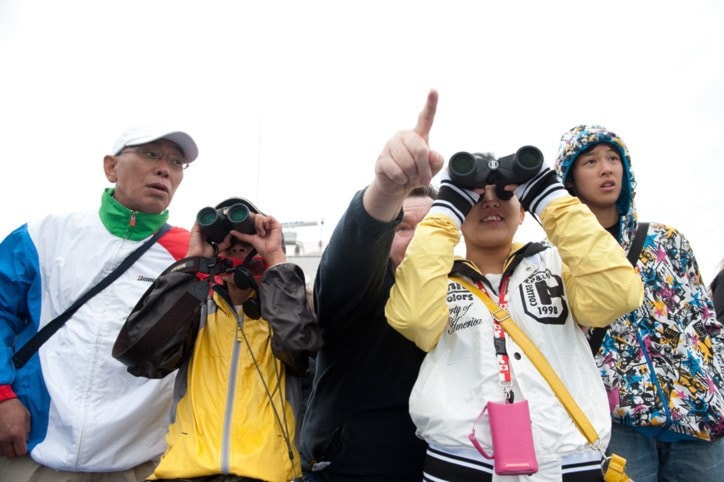TELEGRAPH COVE—The aquatic wildlife that makes its home off the shores of North Vancouver Island clearly has a universal appeal.
As guests boarded the MV Lukwa for a half-day whale-watching cruise Friday, captain Wayne Garton of Stubbs Island Whale Watching asked them to identify their place of origin. The clientele included visitors from Japan, Spain, Switzerland and even the far-off, mythical land of Alberta.
The big draw are the numerous orcas, both fish-eating resident whales and the mammal-eating transients who visit the region on a seasonal basis. But those who make the time on their travels to board a whale-watching trip get more for their buck than a few photos of dorsal fins.
Many local pilots are as much tour guide, entertainer and pitch man as sea captain. Before clients step on board the Lukwa — which means "Place in the forest" in the Kwak'wala language — Garton recaps highlights from recent trips, gives detailed instructions on boat safety and protocol (with a particular emphasis on proper use of the marine toilet) and informs them of the wide variety of wildlife that might be seen on the trip.
During Friday's voyage, he paused between instructions so that interpreter Yumi Tsutsui could translate to the nine-member delegation from Port Hardy's sister city of Numata, Japan.
Rather than guard a find like a trusted and secret fishing hole, local captains tend to work cooperatively once a pod of orcas or a humpback are spotted. It is common to cruise into the vicinity of whale activity to find one or more other whale watching operators already there.
Friday's first sighting came when Garton motored through Blackfish Sound to where Jim Borrowman, former owner of Stubbs Island Whale Watching and now proprietor of Orcella Expeditions, was treating clients aboard the Gikumi to a view of Plumper and Kaikash, a pair of resident male orcas from the A36 matriline. Nearby, another dozen tourists looked on from an inflatable operated by Eagle Eye Adventures.
After letting his passengers snap a number of photos, and ooh and ahh over a pair of breaches and some flipper rolls by the killer whale brothers, Garton pointed the Gikumi back up Johnstone Strait to locate a pair of humpback whales spotted by another boat.
He soon had passengers marvelling over one of the big whales, which even performed a feeding lunge for the tourists. The next sighting was a pair of huge cruise ships, and the Lukwa broke off from the humpback as the big ships bore down through the strait.
A short while later, tucked into the lee of Stubbs Island to avoid the large wake thrown by the cruise liners, Garton cut the engines and gave over the show to naturalist Sarah Osborne. The other part of a whale-watching excursion off the North Island is education, and Osborne was up to the task with a 15-minute interpretive presentation that explained the differences between resident and transient Orca populations, the human impacts that could threaten their existence, and steps that can be taken to ensure their survival.
Back at Telegraph Cove, Garton deftly navigated the Lukwa to dockside, jumped down from the cabin to help Osborne tie off the craft, then offered a parting word for each of his guests.
After thanking them and suggesting a visit to the nearby Whale Intrepretive Centre, Garton offered a final word — to each of his guests.
"Farewell, adios, auf wiedersehen and … how do you say goodbye in Japanese? Oh, yes, sayonara."
